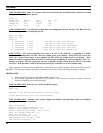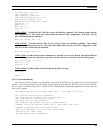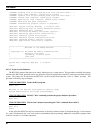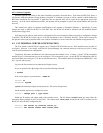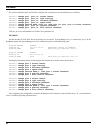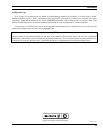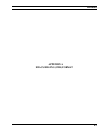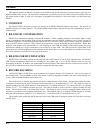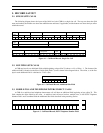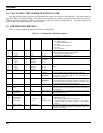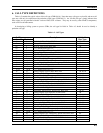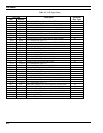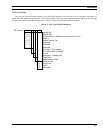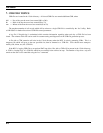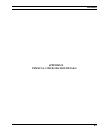
LBI-38965
A-2
This appendix defines the EDACS call detail record (CDR) format for the collection of system resource usage data in a
multisite trunked radio system. The document is intended for use primarily by air time billing software developers who use
this record format as input, as well as for developers of equipment and software to collect and archive call detail data from
EDACS.
1. OVERVIEW
The EDACS CDR is designed to record call activity on an EDACS multisite trunked radio system. The records are
intended primarily for billing purposes. The EDACS CDR format balances efficient storage with comprehensive resource
utilization data.
2. BILLING BY CONVERSATION
EDACS uses transmission trunking to allocate RF channels. Unlike a landline telephone conversation, where a single
circuit is established at the beginning of the call and disconnected at the end, EDACS establishes a new "circuit" (assigns an
RF channel) each time a conversation participant presses the PTT switch on a radio, and disconnects (drops the channel) as
soon as the PTT switch is released. Thus, a single conversation may result in several RF channel assignments. Rather than
designate each of these brief transmissions as a call requiring its own CDR, the EDACS CDR format permits all of the
transmissions making up a single conversation to be recorded in a single CDR. The CDR records the elapsed time of the
conversation, the actual accumulated air time (time that an RF channel was in use) and the number of transmissions involved.
A list of the channels used in the call is also part of the record.
3. BILLING FOR MULTIPLE SITES
EDACS allows calls which originate on one radio site and use RF channels on one or more additional sites. The EDACS
CDR format accommodates these calls by recording the site number and a list of the RF channels used for each site
participating in the call. In addition , the accumulated air time field in the CDR contains the total air time used on all sites. In
this case, the accumulated air time value will usually be greater than the elapsed time.
4. RECORD ENCODING
An EDACS CDR is an ASCII text record terminated by a linefeed character (LF, decimal 10). The record consists of
fixed length fields. The total number of fields in the record is variable, depending on whether the call involved multiple sites
or was a radio-originated telephone interconnect call.
Most of the fields are numeric data and are specified as either Decimal or Hex format. Decimal format fields are radix-
10 integers encoded using the ASCII characters from decimal 48 (“0”) through decimal 57 (“9”). Hex fields are radix-16
integers encoded using the ASCII characters from decimal 48 (“0”) through decimal 57 (“9”) and decimal 65 (“A”) through
decimal 70 (“F”). Two additional formats are used. The radix-64 format is used to provide a sequence number for each
record. The last format used is the dialed digits format. This format is used to record a telephone number dialed by the
originator of a mobile-to-land telephone interconnect call. The standard digits on a telephone DTMF keypad are encoded
using the ASCII characters decimal 35 (“#”), decimal 42 (“*”), and decimal 48 (“0”) through decimal 57 (“9”).
The following table defines the ASCII characters used in the CDR radix-64 sequence number field, and their associated
decimal values.
CDR Radix-64 Digit Decimal Equivalent
0123456789 0 to 9
ABCDEFGHIJ 10 to 19
KLMNOPQRST 20 to 29
UVWXYZabcd 30 to 39
efghijklmn 40 to 49
opqrstuvwx 50 to 59
yz#$ 60 to 63



